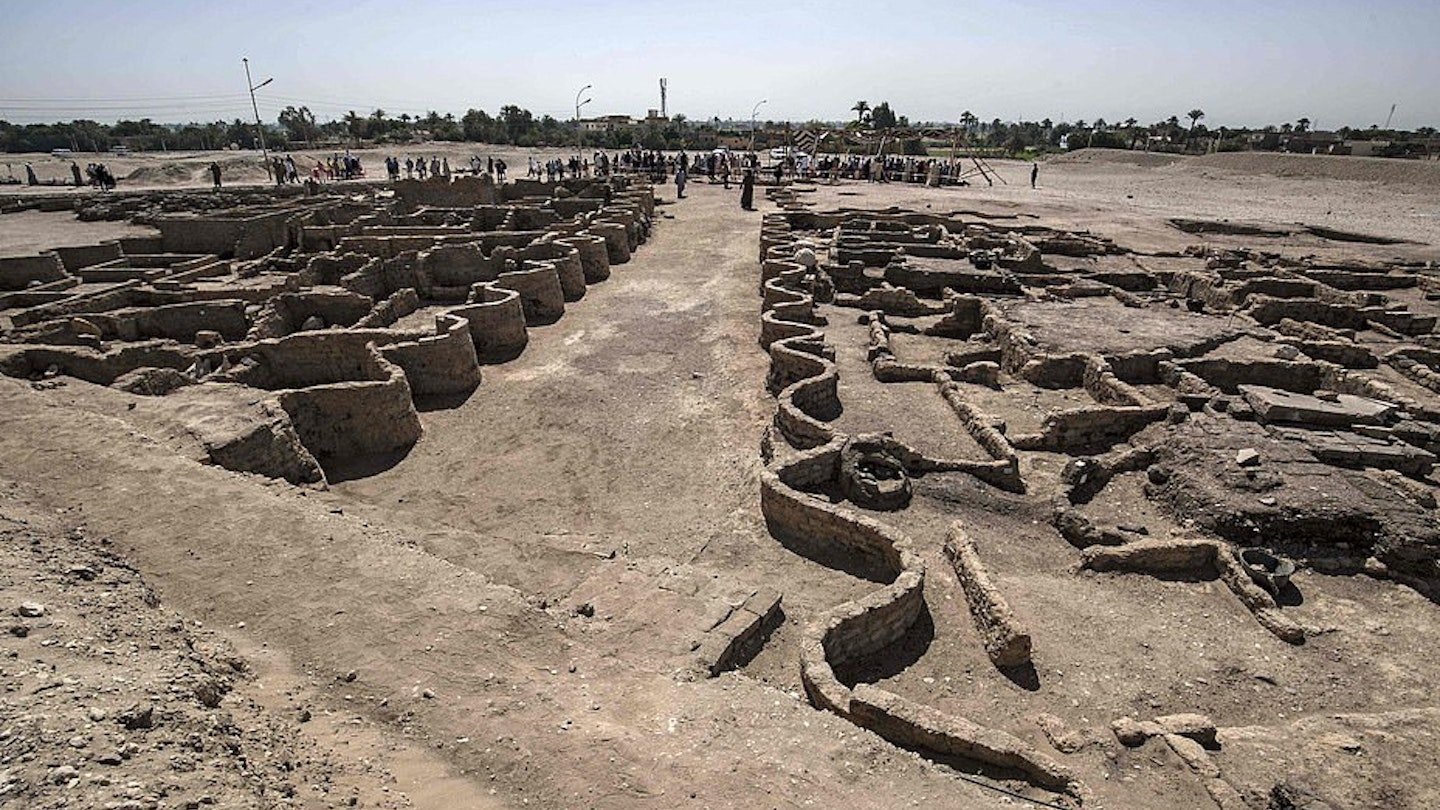Ancient Pharaonic City Discovered Near Luxor, Egypt
An ancient pharaonic city built around 3500 years ago has been discovered near Luxor in Egypt. This significant archaeological find is associated with a palace built for the jubilee of Pharaoh Amenhotep III, who ruled approximately between 1386 and 1353 BCE.
The city at the ‘Palace of the Dazzling Aten’ was uncovered in September 2020, near the Colossi of Memnon, which are two massive stone statues of the pharaoh, known as Egypt’s greatest builder. This site is also close to the Temple of Ramesses III at Medinet Habu, and the Ramesseum, the mortuary temple of Pharaoh Ramesses II. Moreover, the area included other palaces, administrative buildings, a temple dedicated to the god Amun, and a desert altar known as the Kom al-Samak.

Additionally, a vast ceremonial lake known as the Birket Habu and a sprawling settlement comprising houses and workshops to support the palace were discovered, extending over seven kilometers along the Nile. Almost all structures were constructed from unbaked mud bricks, which have unfortunately decayed over time. Peter Lacovara, director of Ancient Egyptian Heritage and Archaeology Fund, described this extraordinary find as akin to an ancient Egyptian Pompeii, allowing visitors to walk down the streets of a village from 3500 years ago. He remarked, “What is remarkable about the latest discovery is its amazing degree of preservation.”

Many of the houses discovered were preserved up to a height of three meters, retaining much of their contents intact. This included tools, kitchens, and pottery vessels, many featuring the exquisite blue painted decoration known as ‘palace ware.’ Inscriptions on some of the pots identified the settlement as ‘the Rise of Aten,’ linking it to Amenhotep III’s jubilee. Another significant inscription referred to the ‘domain of the dazzling Aten,’ named in connection with a temple built at Karnak by Amenhotep’s son, Akhenaton, also known as the “heretic pharaoh” who ruled after Amenhotep III alongside his wife, Nefertiti.
This discovery illustrates the rich archaeological significance of this region and highlights the necessity for its conservation as a national park in Egypt. For further information regarding the Ancient Egyptian Heritage and Archaeology Fund, additional insights can be explored here.




